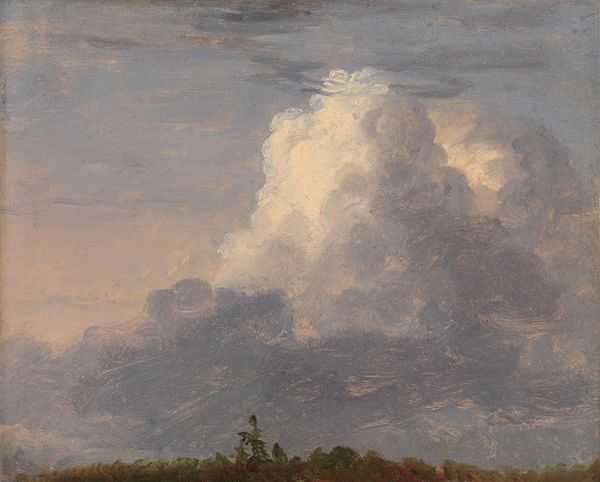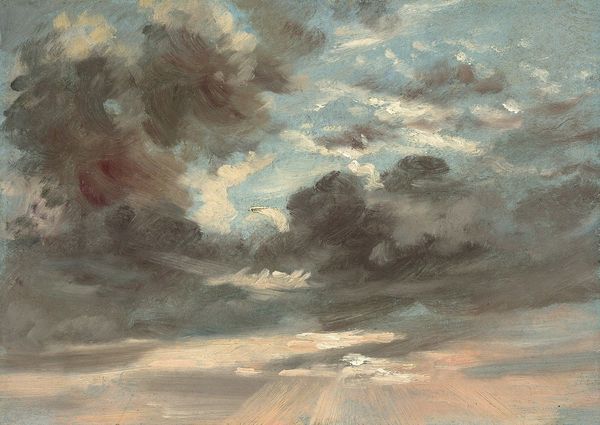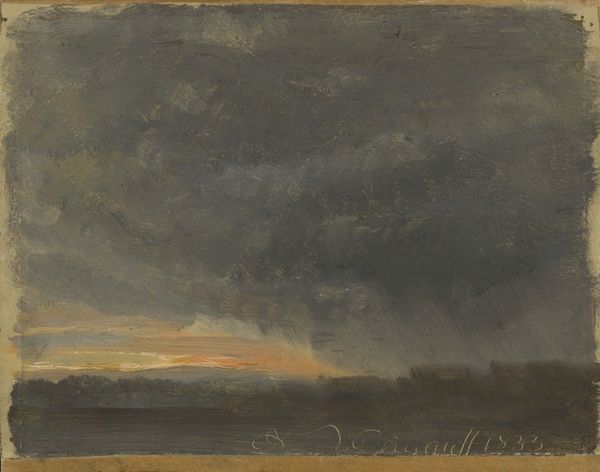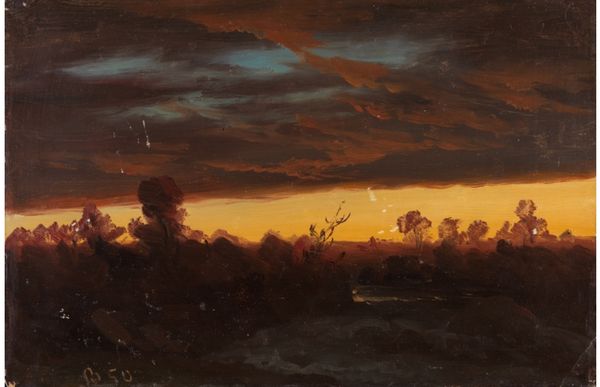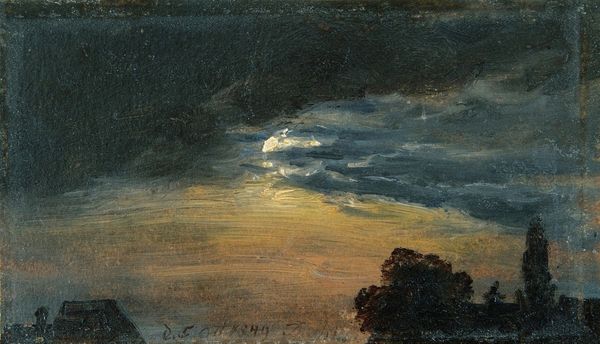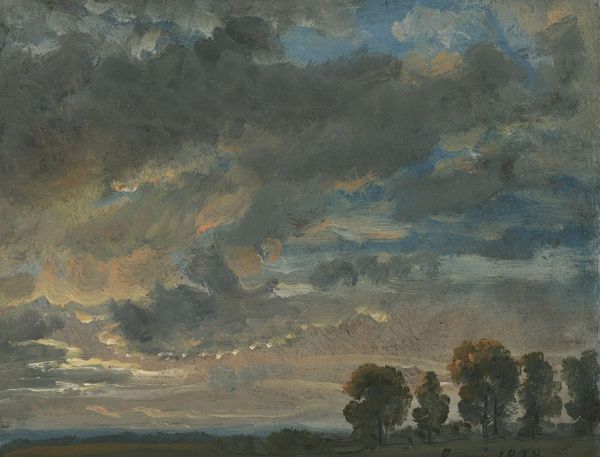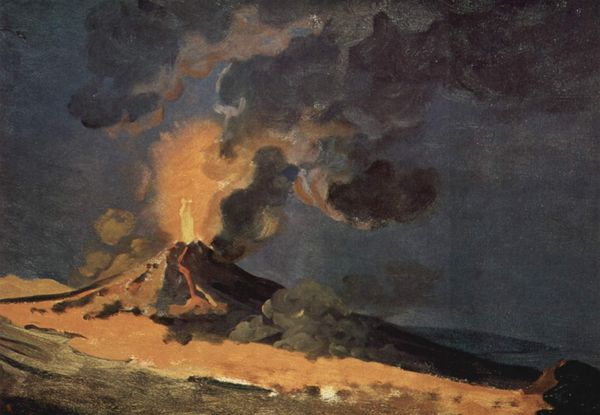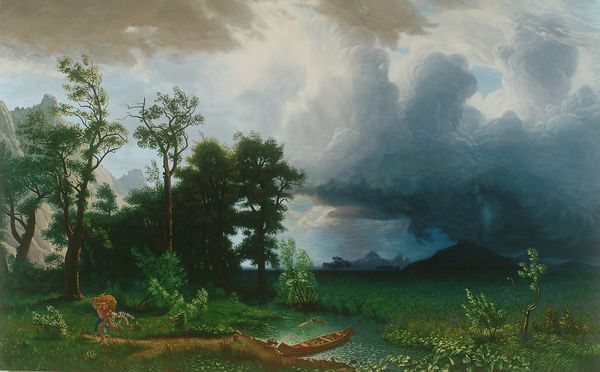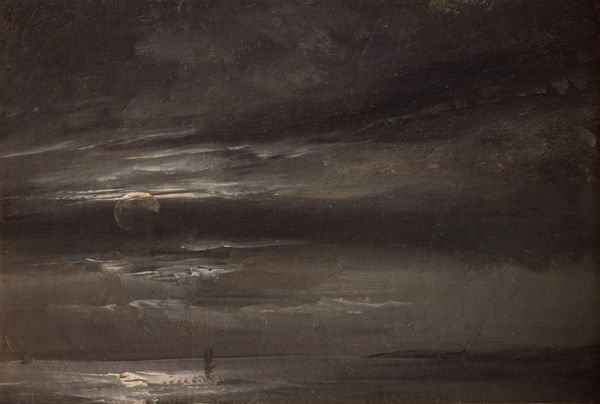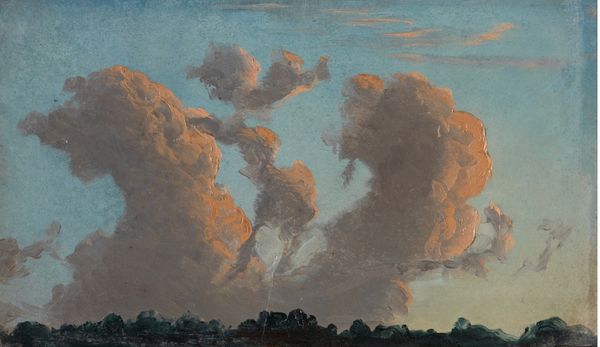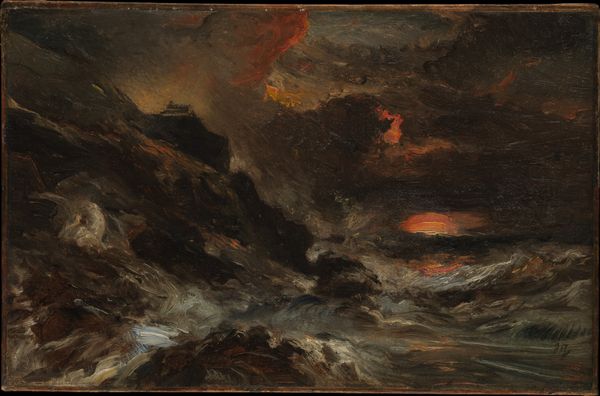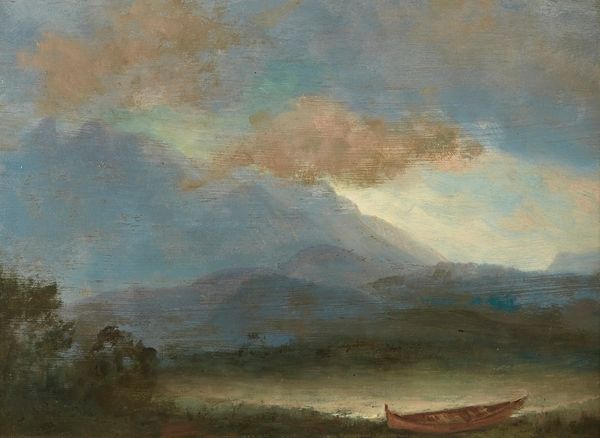
painting, plein-air, oil-paint
#
painting
#
plein-air
#
oil-paint
#
landscape
#
oil painting
#
romanticism
#
hudson-river-school
Copyright: Public Domain: Artvee
Curator: Thomas Cole’s “Clouds on the Mountaintop,” rendered in oil paint, captures a majestic, sweeping vista. I think it epitomizes plein-air painting and landscape art as practices that helped shape the Hudson River School’s approach to the American landscape. Editor: My immediate feeling is of drama, even impending doom. The fiery palette of the clouds contrasted against the dimming sun suggests powerful, elemental forces at play. There's a spiritual quality too, a sense of nature's immense power. Curator: Cole was certainly drawn to those epic qualities. His romantic leanings shine through, and we have to contextualize this within broader notions of American exceptionalism that defined that period and fueled colonial expansion, of course. How can the notion of wilderness in his time affect Indigenous populations and discourses around conservation efforts? Editor: Absolutely, the symbol of the wilderness as sublime carries historical weight. The sun, for example, is both a life-giving source and also alludes to revelation, but in my experience, landscapes always represent psychological states too, which affects readings about social states. The lone mountaintop in view appears touched by celestial light, but are we to interpret it as beacon or warning? Curator: And, of course, light and color intersect to convey both divine authority and impending catastrophe, echoing socio-political power relations that played out then as now. This dichotomy, to me, renders it potent; the intersectional implications encourage further analysis. Editor: Cole taps into deep mythic traditions. He transforms a real geographical space into something universal, almost allegorical. Even the brushstrokes contribute – notice how they emulate the roiling of clouds. How they amplify our perceptions around concepts like dominance and place. Curator: By viewing this work through a contemporary lens that examines the intersections of race, gender, and class, we can uncover a more nuanced understanding of art's role in perpetuating colonial narratives. Editor: Exactly. The artist is speaking about the landscape and our complex relationship to it. When decoded, that landscape in turn speaks volumes about culture, memory, and the construction of belief itself. Curator: So much to unpack! These layers definitely enrich the narrative. Editor: Indeed. Art constantly re-interprets its visual legacy. It’s wonderful.
Comments
No comments
Be the first to comment and join the conversation on the ultimate creative platform.
